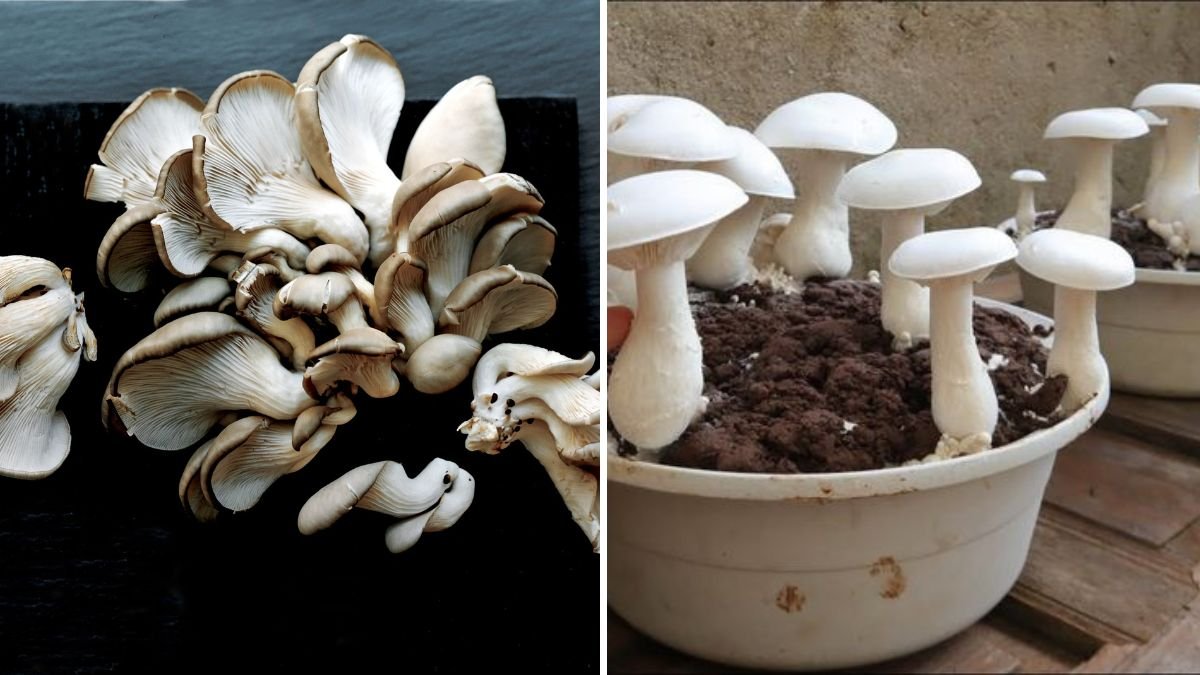Mushrooms are one of the most versatile and nutritious ingredients in the kitchen, adding flavor, texture, and health benefits to a wide range of dishes. While many people buy mushrooms from grocery stores, growing them at home can be surprisingly easy and rewarding. You don’t need a garden or special equipment—just a simple bowl, the right growing medium, and a little patience. In this article, we’ll explore the step-by-step process of growing mushrooms in a bowl at home, tips to ensure success, and why this method is both fun and practical for beginners and urban gardeners.
Why Grow Mushrooms at Home?
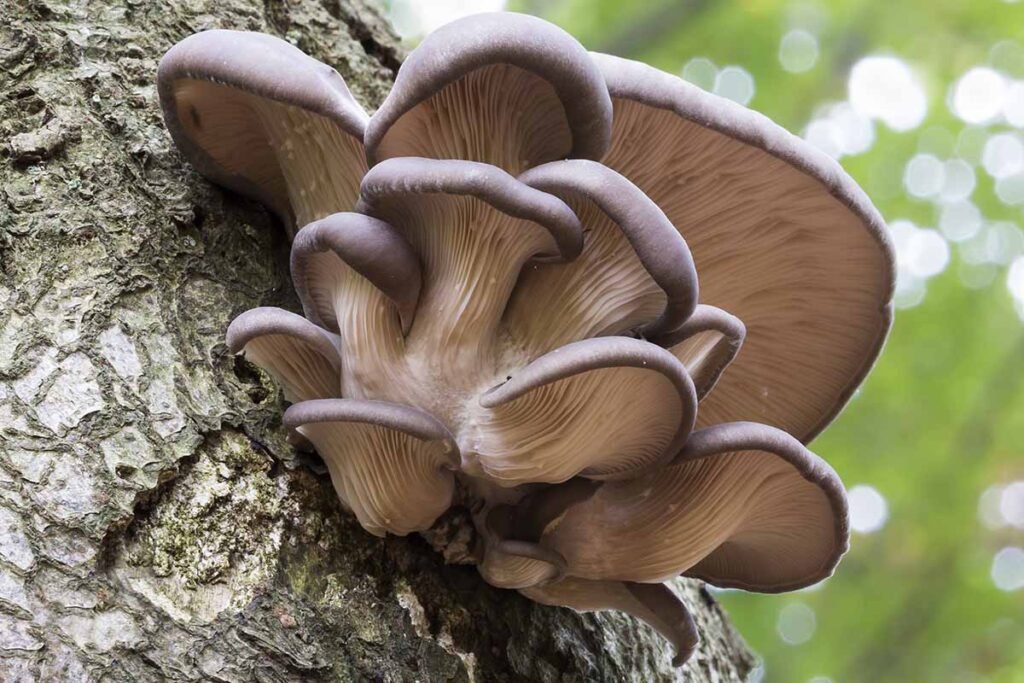
There are several reasons why homegrown mushrooms are a great idea:
- Freshness: Mushrooms lose freshness quickly after being harvested, so growing them at home ensures peak flavor and texture.
- Nutrition: Mushrooms are rich in protein, fiber, antioxidants, vitamins, and minerals.
- Cost-Effective: Growing mushrooms at home is inexpensive, especially compared to buying fresh or exotic varieties from stores.
- Urban Gardening Friendly: No garden is needed—mushrooms can thrive in small indoor spaces, on balconies, or kitchen counters.
- Fun and Educational: Watching mushrooms grow from spores to full-sized fruiting bodies is a fascinating process for adults and children alike.
Whether you’re a seasoned home gardener or a curious beginner, cultivating mushrooms in a bowl is a simple and rewarding project.
Choosing the Right Mushroom Variety
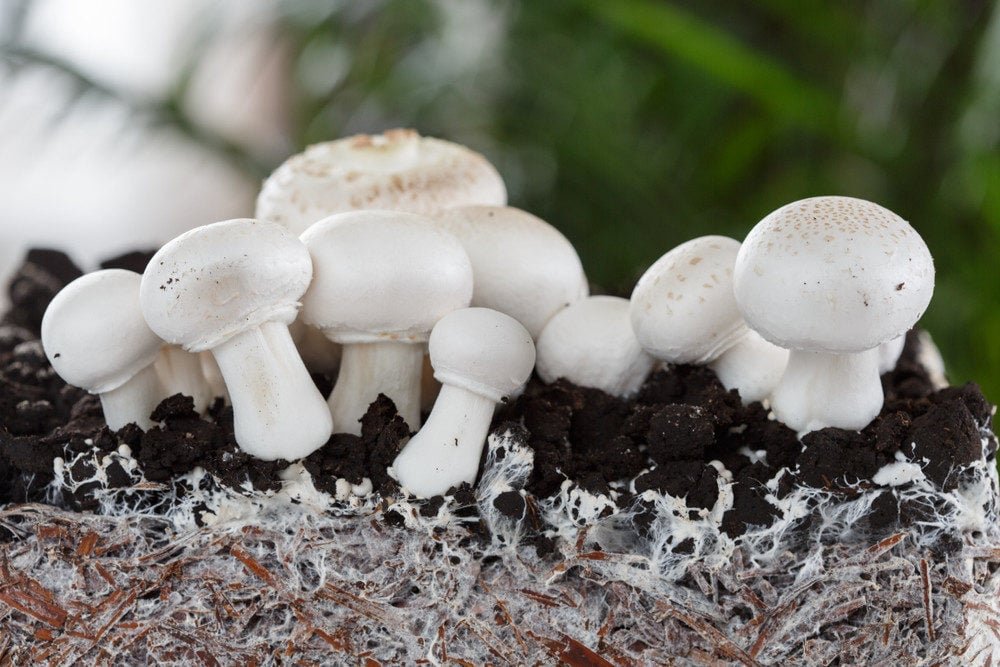
Not all mushrooms are suitable for bowl cultivation at home. Some varieties are easier to grow and more forgiving for beginners:
- Oyster Mushrooms: One of the easiest mushrooms to grow indoors. They grow quickly and can thrive on a variety of substrates.
- Button Mushrooms (White or Cremini): Widely available and easy to cultivate with proper care.
- Shiitake Mushrooms: Slightly more advanced, but highly rewarding in flavor and texture.
For beginners, oyster mushrooms are highly recommended due to their rapid growth, resilience, and high yield in small containers.
Materials You’ll Need
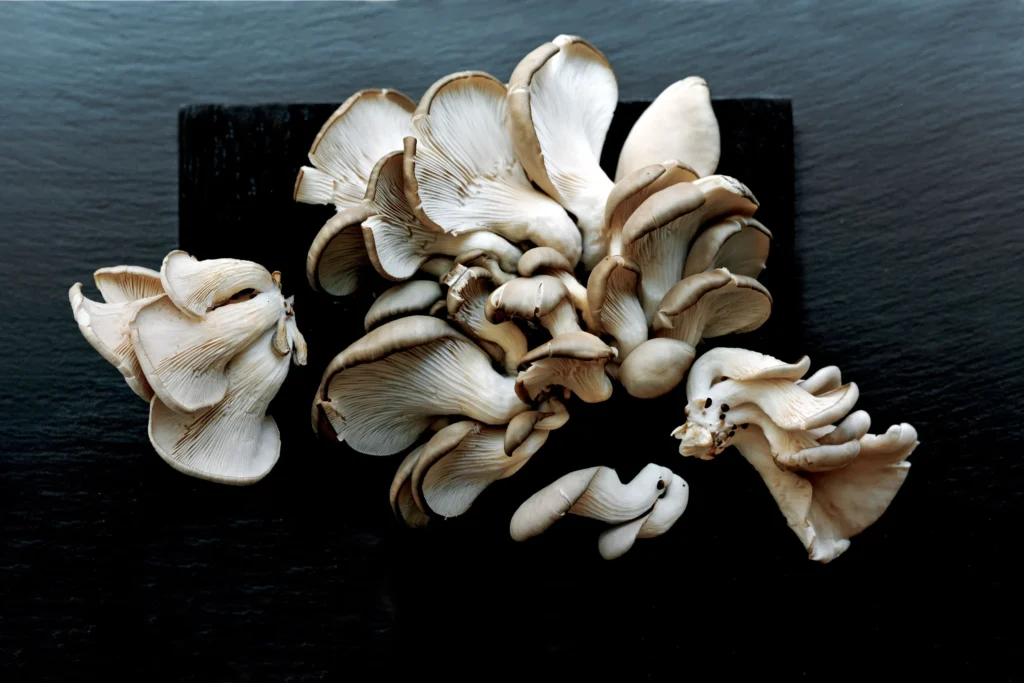
To grow mushrooms in a bowl at home, gather the following materials:
- A Clean Bowl: Wide and shallow bowls are ideal, but any container that allows airflow works.
- Growing Medium: Straw, sawdust, or coffee grounds can be used depending on the mushroom variety.
- Mushroom Spawn or Spores: Spawn is easier for beginners, while spores require more care and patience.
- Plastic Wrap or Lid: Helps maintain humidity while allowing some airflow.
- Spray Bottle: For misting and maintaining moisture levels.
Having these materials ready ensures a smooth start and a higher chance of a successful harvest.
Preparing the Growing Medium
The growing medium is essential for mushroom growth. Here’s how to prepare it:
- Straw Method (Common for Oyster Mushrooms):
- Chop straw into small pieces.
- Pasteurize by soaking in hot water (160–180°F) for 30–60 minutes to kill unwanted bacteria.
- Drain and cool before use.
- Coffee Ground Method:
- Used coffee grounds can be repurposed as a growing medium.
- Ensure they are fresh, moist, and free of mold.
- Sawdust or Wood Chips:
- Sterilize by boiling or steaming to eliminate contaminants.
Once the medium is prepared, it should be slightly moist but not waterlogged. Proper preparation ensures mushrooms have the nutrients and environment they need to grow.
Planting Mushroom Spawn in a Bowl
- Layering:
- Place a layer of growing medium in the bottom of the bowl.
- Sprinkle mushroom spawn evenly over the medium.
- Add another layer of the medium on top, covering the spawn.
- Moisture:
- Mist the layers lightly with water.
- Maintain consistent moisture without making the medium soggy.
- Covering:
- Cover the bowl loosely with plastic wrap or a lid to maintain humidity.
- Ensure small openings for airflow to prevent mold formation.
Correct planting and layering are critical for healthy mycelium growth, which eventually produces mushrooms.
Maintaining the Right Conditions
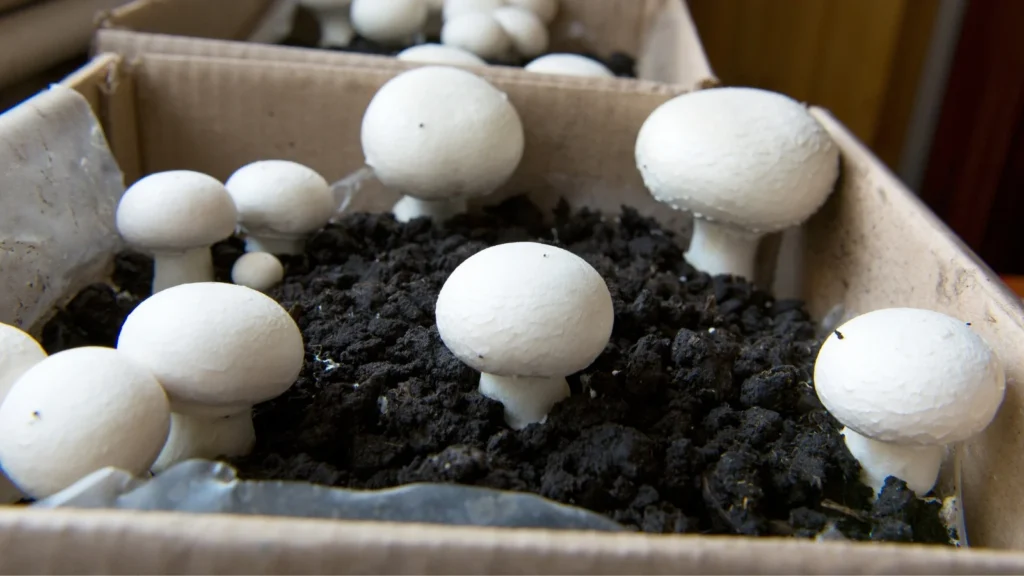
Mushrooms thrive under specific conditions that mimic their natural environment:
- Temperature: Most indoor mushrooms prefer 65–75°F (18–24°C).
- Humidity: High humidity (80–90%) is essential for fruiting. Mist the medium regularly.
- Airflow: Proper ventilation prevents mold and supports healthy growth. Avoid stagnant air.
- Light: Indirect light is sufficient. Direct sunlight can dry out the medium and inhibit growth.
Maintaining these conditions ensures that mushrooms grow quickly, healthily, and with minimal risk of contamination.
Understanding the Growth Cycle
Mushroom growth occurs in distinct stages:
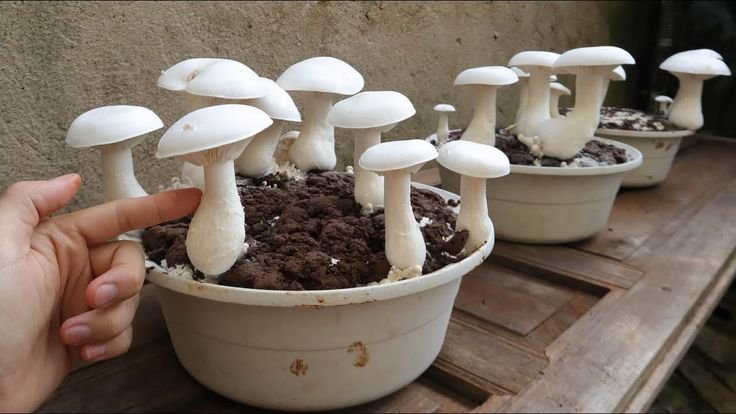
- Mycelium Formation: The white, thread-like network spreads through the growing medium. This stage lasts 1–3 weeks.
- Pinning: Tiny mushroom pins (baby mushrooms) appear on the surface.
- Fruiting: Pins grow into full-sized mushrooms over several days.
- Harvest: Mushrooms are ready to harvest when caps are fully open but before they start releasing spores.
Understanding these stages helps you monitor growth, prevent problems, and know when to harvest for the best quality.
Harvesting Mushrooms
Harvesting mushrooms at the right time ensures peak flavor and texture:
- Timing: Most mushrooms are ready 5–10 days after pinning, depending on the variety.
- Method: Gently twist and pull the mushroom from the base, or cut with a clean knife.
- Frequency: Harvest daily or every other day, as mushrooms grow quickly and overripe ones can spoil the batch.
Proper harvesting promotes continued fruiting and keeps your bowl garden productive.
Tips for Success
- Use Fresh Spawn: Old or contaminated spawn reduces success rates.
- Monitor Humidity: Mushrooms need constant moisture, so mist regularly.
- Avoid Contaminants: Wash hands and tools before handling spawn or mushrooms.
- Experiment with Mediums: Straw, coffee grounds, and sawdust each yield slightly different results.
- Rotate Bowls: Place bowls in indirect light and rotate for even growth.
Following these tips increases the chances of a successful and bountiful mushroom harvest.
Benefits of Growing Mushrooms in a Bowl
- Space-Efficient: Ideal for small apartments, kitchens, or balconies.
- Quick Harvest: Many mushrooms, like oyster mushrooms, grow in just 2–4 weeks.
- Educational: Observing the life cycle of mushrooms is a fun learning experience.
- Sustainable: Repurposing organic waste like straw or coffee grounds reduces waste.
- Fresh and Nutritious: Homegrown mushrooms are more flavorful and nutritious than store-bought.
This method allows anyone, regardless of space or gardening experience, to enjoy the process of growing fresh mushrooms at home.
Conclusion
Growing mushrooms in a bowl at home is an unbelievable yet simple process that anyone can try. From selecting the right variety and preparing the medium to planting, maintaining conditions, and harvesting, this method makes mushroom cultivation accessible, even in urban settings. The satisfaction of watching mycelium spread and mushroom pins emerge is unmatched, and the reward is fresh, flavorful, and nutritious mushrooms right from your own home.
Whether you’re a beginner gardener, a food enthusiast, or someone interested in sustainable living, mushroom cultivation in a bowl is a practical, fun, and highly rewarding project. Start today, and in just a few weeks, you could be harvesting your first batch of delicious homegrown mushrooms!
